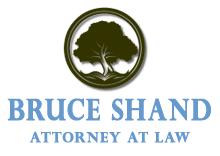Stepping Up with Portability- Ideas for Utah Estates over $10 Million
One of the key advantages of a portability-based estate plan over a credit shelter trust-based estate plan is that portability allows the married couple to obtain a second step up in basis upon the death of the second spouse.
With the new ability to minimize estate taxation, known as “portability,” there is now a choice between the automatic portability plan and the old standby of the trust-based plan, notably the credit shelter trust plan.
One important detail driving the choice is the “step up in basis,” as pointed out in a recent Forbes article titled “Portability Plans Vs Credit Shelter Plans Round 1: Step Up in Basis.”
As you may know, the laws surrounding estate and wealth transfer planning underwent a tumultuous change with ATRA. Time was, we spent our planning sessions looking over our shoulder to see what the status of the estate tax was, but that is a gentler beast these days. Nevertheless, there are new competing concerns for which to plan. The old planning techniques aren’t necessarily less useful today, but our motivations may have changed.
To learn more about the old tricks, there are a few related Forbes articles worth perusing: “Planning for Married Couples After ATRA: The Simple Portability Based Plan” and Part 2 thereto.
So what’s the lesson on the step up in basis?
A “step up in basis” is a somewhat subtle effect, but one that’s not to be overlooked. After all, the basis of an asset will determine the taxable value to your heirs, so to have the basis stepped up at various stages can only help cut the overall tax bill. Consequently, any plan that lets you do this can be useful.
It’s not quite so simple but, depending upon the assets, simply using the “portability plan” can help realize the greatest tax savings and the original article runs through the scenarios to show you some hard math on how it works.
Whether you have an old plan in place or if you’re just now looking to set up your estate plan, there are simply more considerations to be made these days and assessments like cost basis can make all the difference. It’s important to seek competent estate planning legal counsel to help chart the best course for your assets and the needs of your family.
Reference:
Forbes (April 8, 2014) “Portability Plans Vs Credit Shelter Plans Round 1: Step Up in Basis”
Forbes (March 18, 2014) “Planning for Married Couples After ATRA — Part I”
Forbes (March 25, 2014) “Planning for Married Couples After ATRA — Part 2”






